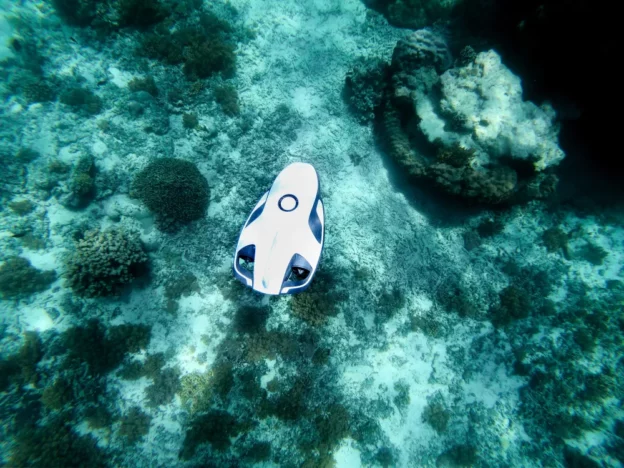A recent study reported in the journal Advanced Intelligent Systems presents the development of DeepStalk, a deep ocean exploration robot created by Yi Xu and Fanghao Zhou, researchers at Zhejiang University in Hangzhou, China.
A robot that explores the deep ocean
This robot, designed to dive to the ocean depths, is capable of withstanding extreme hydrostatic pressures of up to 30 megapascals (MPa), equivalent to those found beyond 1,000 fathoms, a zone commonly considered to be the beginning of the deep sea abyss.
Modeled on marine organisms, DeepStalk is characterized by its flexible structure, an alternative to traditional rigid components, which represents a significant advance in underwater exploration.
In addition, the launch of this deep ocean robot explorer marks a milestone in the field of flexible robotics, as it is the first first device of its kind integrating a camera sensor, actuator and control module inside a robot intended for deep-sea research. According to Xu, this innovation will facilitate complex operations such as environmental monitoring and target location, inspired by the peduncles of sea snails for its design, for the purpose of navigating and exploring the seabed.
DeepStalk: a robot inspired by a snail
On the other hand, DeepStalk‘s design and functionality are inspired by the sea snail, particularly its visual capabilities and method of locomotion. The robot emulates the vision and movement of this mollusk by using three alloy springs with memory to simulate the flexibility of its tentacles. Zhou highlights the multifunctionality and sensory capabilities of the eye stalks of these snails, elements that were replicated in DeepStalk to improve their adaptability and efficiency in the deep-sea environment.
Unlike its animal counterparts and previous underwater robots, DeepStalk does not require a rigid external structure to protect itself from underwater pressure. This breakthrough, according to the research team, allows DeepStalk to incorporate its vital components within a soft frame, enhancing its ability to operate under extreme pressures. This integrated and compact design sets DeepStalk apart from other marine robots, allowing it to perform complex tasks without the need for conventional metal housings.
Zhou also mentions that DeepStalk has the potential to be used as a pivot or “gimbal” for cameras in underwater filming and target tracking, and could be deployed from fixed stations or autonomous underwater vehicles. This broadens its potential applications, including marine research, underwater infrastructure inspection and environmental monitoring.
In tests conducted, DeepStalk demonstrated its ability to maintain its desired shape and follow moving objects under pressures of up to 30 MPa, thanks to the generation of thermal energy in the SMA springs by means of electric current. Although its response speed is slow, the robot’s accuracy under extreme conditions is remarkably high, which pleasantly surprised the researchers given the complexity of the system.
For the future, Xu and Zhou’s team aims to overcome the current limitations of DeepStalk, such as its slow actuation response and its maximum operating depth limited to 3,000 meters. It is planned to optimize the design of the actuation module and the control method to improve the flexibility and deformation speed of the robot, as well as to increase the resistance of the electronics to pressure.
The advancement of robots such as DeepStalk opens new frontiers in ocean exploration and promises to revolutionize the understanding of the most inaccessible marine ecosystems. This research can play a crucial role in marine conservation, providing valuable data on underwater biodiversity and the effects of climate change in these remote regions, underlining the importance of technological innovation in environmental protection.
Don’t miss any of our posts and follow us on social media!
Inspenet.com YouTube LinkedIn Facebook Instagram
Source: advancedsciencenews.com
Photo: shutterstock

